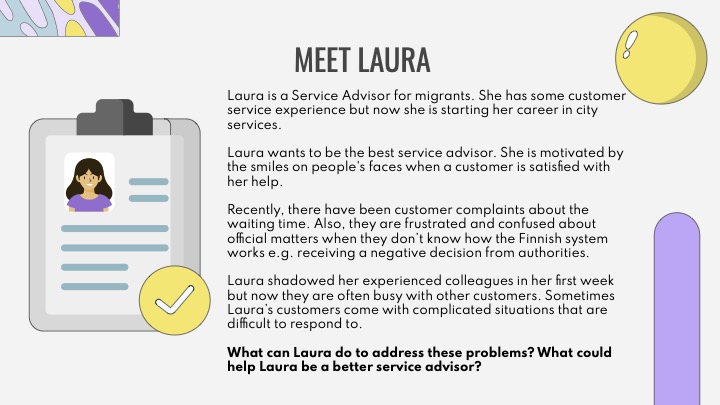By Lucy Truong – Design Researcher at Trust-M
Introduction
Should we ask a Chat-GPT or a Reddit forum for advice when moving to a new country? When we design AI systems for public use, it is crucial to consider the diversity of users and their perspectives, unlike when designing for a target customer group. The complexity of public diversity, migrant backgrounds of different cultures, attitudes and practices alone pose significant challenges, not to mention their ability to use AI or digital technology. As an interaction designer, one needs to prioritise the needs of end users but it is also necessary to incorporate other critical stakeholders, which inevitably adds another layer of complexity to the equation. This blog will explore the challenges and discoveries made in designing conversational AI systems, drawing from personal experiences and insights gained through working in Trust-M.
Setting the Stage – Acknowledging Multiple Stakeholders
In the realm of AI design, the introduction of chatbots prompted questions about the primary beneficiaries. While end users, in this case, migrants, were the focal point, it was essential to recognize that each migrant came with knowledge made up of their personal and professional network of informants. Official informants included service advisors and local authorities who acted as mediators in providing guidance and making decisions. Balancing the needs of all stakeholders was crucial for the successful integration of technology into larger organisations.
Identifying Challenges Through Collaborative Perspectives
To comprehend the challenges faced by migrants, we adopted a collaborative approach with the service advisors. Capturing their perspective provided a nuanced understanding of the integration process. This was done by combining existing literature with ongoing research that collaboratively engaged migrants and relevant professionals. Our cooperative effort was vital in identifying key challenges for both service advisors and migrants, forming the foundation for a comprehensive solution.
Proposal – Augmenting Service Advisor Skills
Building upon this understanding, our focus shifted to proposing a solution that addresses challenges faced by both migrants and service advisors. The goal was to augment service advisor skills, utilising conversational data for record-keeping and providing real-time suggestions of relevant services. The proposed system aimed to streamline interactions, reduce wait times, and leverage the expertise of multiple actors for specific cases.

Bridging Chatbot Capabilities with Human Interaction
Acknowledging the limitations of chatbots in handling complex scenarios, the proposed system aimed to blend the advantages of chatbots with the invaluable human touch of service advisors. By capturing ongoing conversations, the system provided immediate service suggestions relevant to the conversation topic and enabled information reuse for the migrant customers. This hybrid approach sought to offer value to end users in complex situations while providing the organisation with valuable insights and data.
Value Now and Value Later
To ensure widespread adoption, it was imperative to consider both short-term and long-term motivations. Using walkthroughs and role-playing activities to understand our users’ needs and interaction breakdowns, we devised a system that not only provided immediate feedback for service advisors but also generated a record of discussions for customers. This approach addressed the challenge of information retention, offering value to users in their current complex scenarios while considering the future reusability of the generated data.
Bringing Value to Both End Users and Organisations
A crucial realisation was that many digital services often prioritise organisational value over end-user benefits as organisations act as purchasing decision-makers. The goal shifted towards bringing equal value to both end users and organisations. By incorporating existing chatbot technology, the proposed system aimed to empower customers in complex scenarios while providing valuable insights back to the organisation for training future AI technologies.
Conclusion
In navigating the complexities of conversational AI design, one of the key learnings in this Trust-M project is that success lies in acknowledging and incorporating the diverse perspectives of multiple stakeholders. By bridging the gap between technology and human-centric design, we can create systems that provide immediate value to users while contributing valuable data to organisations. The journey, inspired by a commitment to finding value in augmenting human skills, reaffirms the importance of holistic design in the evolving landscape of conversational AI.
